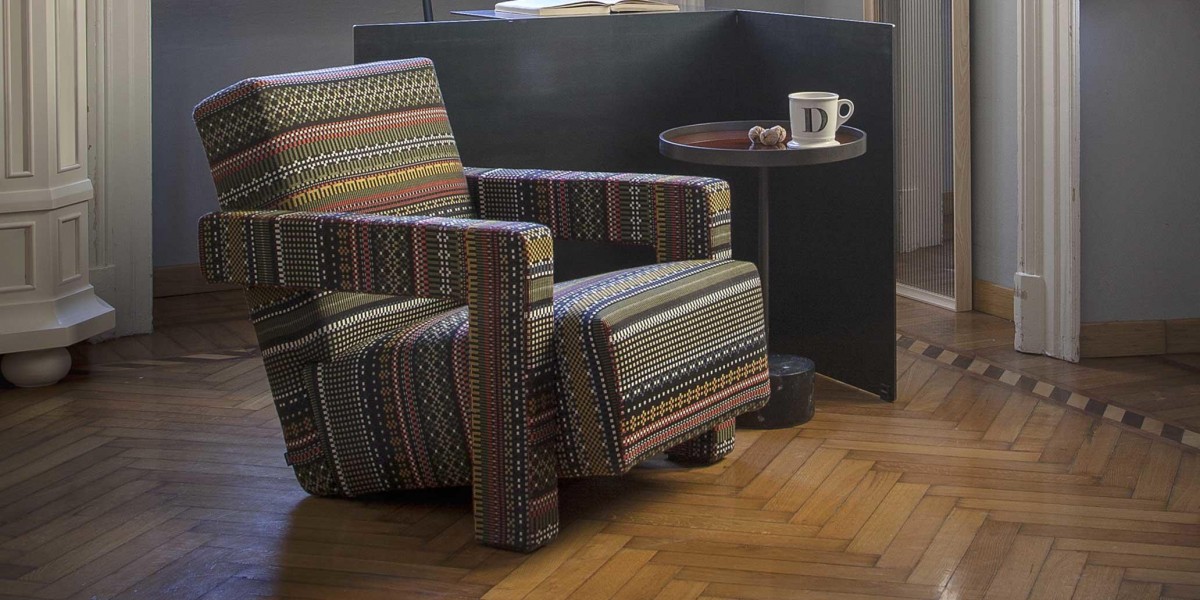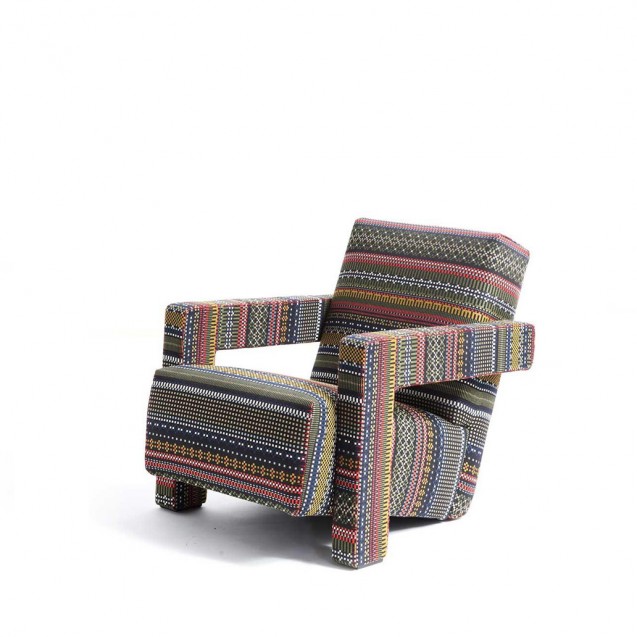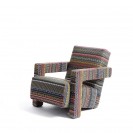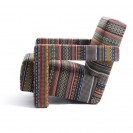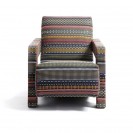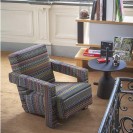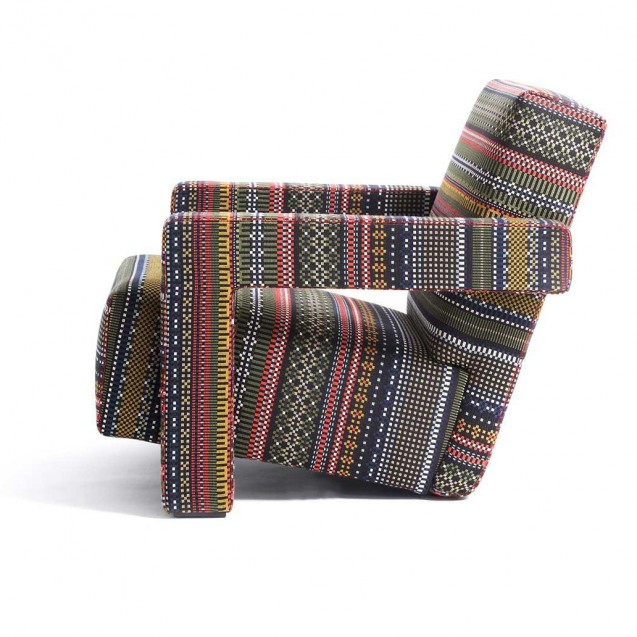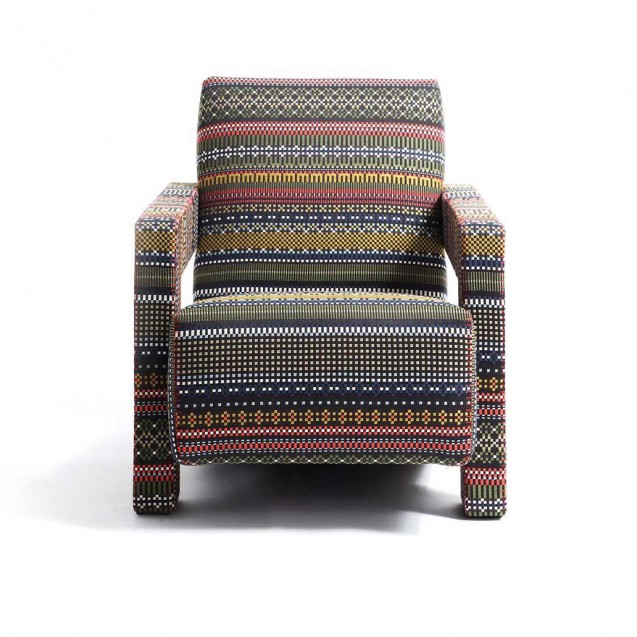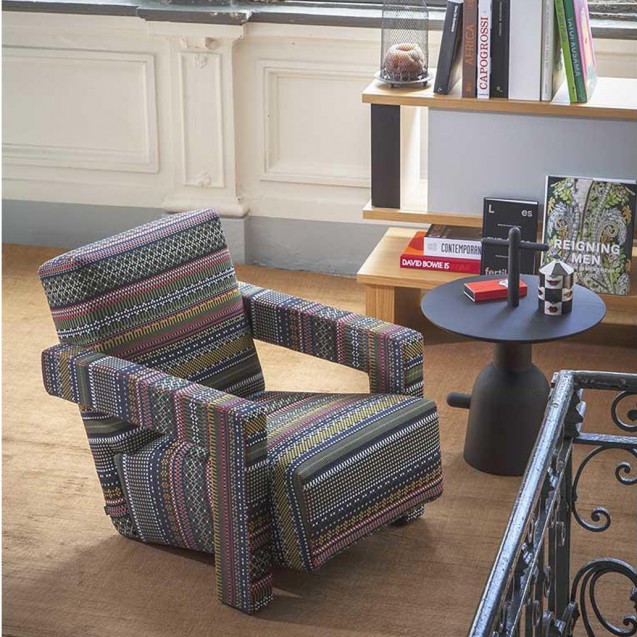637 Utrecht Point Limited Edition
Contemporary interpretation of the 1935 icon with special
upholstery designed by the fashion designer Paul Smith for Maharam by Kvadrat.
Point is a vibrant upholstery textile that is a study in scale,
density, rhythm, colour and proportion.
Notable for its weight and tactility, the textile is woven with
dense, semi-lustrous yarns secured by superfine nylon threads. This creates a
gridded structure reminiscent of needlepoint.
Created by renowned British designer Paul Smith and Maharam Design
Studio, it offers many different expressions and virtually infinite
opportunities for creating dynamic and individual interiors.
An imaginative evolution of Paul Smith’s acclaimed‘classics with a
twist’ style, Point has a unique construction chosen for clarity of colour. The
patterns for Point are built from a single square unit. They combine unique but
related stripes and dots that run from selvedge to selvedge. Each pattern
offers an individual repeat in the length that is designed to be cut randomly
and varies in size from 29 to 79 cm. This ensures that every piece of furniture
upholstered with the textile will look unique.
Paul Smith collaborates with Maharam in the creation of furnishing
fabrics since 2003.
Maharam represents Kvadrat in North America while Kvadrat
represents Maharam in Europe.
| About Designer | |
|---|---|
Gerrit Thomas Rietveld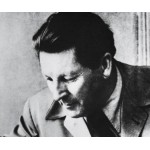 |
Gerrit Thomas Rietveld,
born in Utrecht on 24 June 1888, seems possessed of two personalities, each so
distinct that one might take his work to be that of more than one artist. The
first personality is that seen in the craftsman cabinet-maker working in a
primordial idiom, re-inventing chairs and other furniture as if no one had ever
built them before him and following a structural code all of his own; the
second is that of the architect working with elegant formulas, determined to drive
home the rationalist and neoplastic message in the context of European
architecture. The two activities alternate, overlap, and fuse in a perfect
osmosis unfolding then into a logical sequence. In 1918 Rietveld joined the “De Stijl” movement which had sprung
up around the review of that name founded the year before by Theo van Doesburg.
The group assimilated and translated into ideology certain laws on the dynamic
breakdown of compositions (carrying them to an extreme) that had already been
expressed in painting by the cubists: the “De Stijl” artists also carefully studied the
architectonic lesson taught by the great Frank Lloyd Wright, whose influence
was widely felt in Europe at that time. Collaborating first with
Robert van’t Hoff
and Vilmos Huszar, then with Theo van Doesburg and Cornelius van Eesteren,
Rietveld soon became one of the most distinguished interpreters of the
neoplastic message. Among his most important
works are:
the Schröder house at
Utrecht (1924); the “Row
Houses” at
Utrecht (1931-34); the Dutch pavilion at the Venice Biennial (1954); the
sculpture pavilion in the Rijksmuseum Kröller-Müller at Otterloo and the Van
Gogh Museum in Amsterdam (1955). Out of his equally important furniture,
Cassina has chosen for its own production: the “Red and Blue” (1918), the “Zig-Zag” (1934), the “Schröder 1” (1923), the “Utrecht” (1935) |
